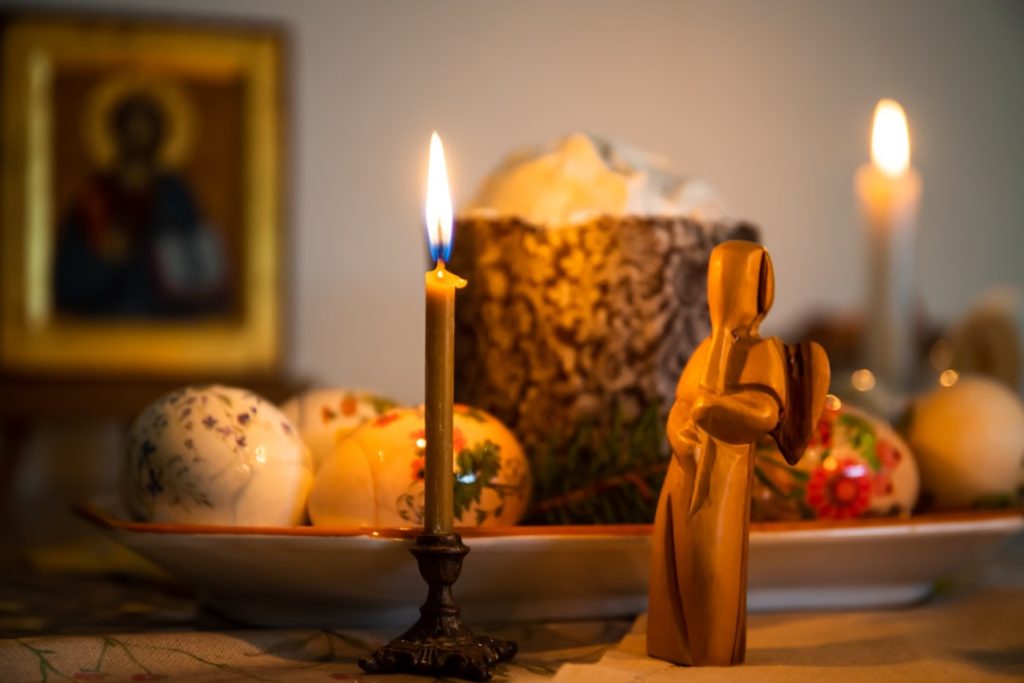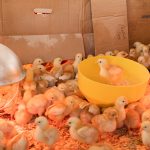Insulating a chicken coop is essential for maintaining a warm and comfortable environment for chickens during cold weather. Proper insulation helps retain heat and prevent drafts, which can negatively impact chicken health. Effective insulation methods include using foam board insulation on walls and ceilings, lining walls with straw bales, and sealing gaps or cracks with caulk or weather-stripping to prevent cold air infiltration.
Floor insulation is also crucial. Adding a layer of straw or wood shavings provides extra insulation and warmth. These measures help maintain a comfortable temperature for chickens, ensuring their health and well-being throughout winter months.
Proper insulation is vital for protecting chickens from extreme temperatures and maintaining their productivity. It reduces stress on the birds and helps prevent illnesses associated with cold exposure. Additionally, insulation can help reduce energy costs for heated coops by improving thermal efficiency.
When insulating a chicken coop, it’s important to consider ventilation to prevent moisture buildup and maintain air quality. Balancing insulation with proper airflow is key to creating a healthy environment for chickens year-round.
Table of Contents
- 1 Provide Extra Bedding
- 2 Use Heat-Generating Materials
- 3 Utilize Natural Sunlight
- 4 Build Windbreaks
- 5 Consider Adding a Heat Lamp
- 6 Monitor Water Sources
- 7 FAQs
- 7.1 What are some ways to keep ducks and chickens warm without electricity?
- 7.2 How can I insulate the coop to keep ducks and chickens warm?
- 7.3 What is deep bedding and how does it keep ducks and chickens warm?
- 7.4 What type of feed should I provide to help keep ducks and chickens warm?
- 7.5 Are there any natural heat sources I can use to keep ducks and chickens warm?
Key Takeaways
- Insulating the coop is essential to keep the chickens warm during cold weather
- Providing extra bedding helps to retain heat and keep the chickens comfortable
- Using heat-generating materials such as straw or hay can help to maintain warmth in the coop
- Utilizing natural sunlight by positioning the coop to receive maximum sunlight can help to warm the coop
- Building windbreaks around the coop can protect the chickens from cold drafts and wind chill
- Considering adding a heat lamp can provide additional warmth during extreme cold temperatures
- Monitoring water sources to ensure they do not freeze and providing warm water for the chickens to drink
Provide Extra Bedding
Keeping Your Flock Warm and Cozy
During the winter months, it’s essential to provide your chickens with extra bedding to help keep them warm and comfortable. Adding a thick layer of straw or wood shavings to the floor of the coop can provide insulation and warmth for your flock. The bedding also helps to absorb moisture and provide a soft, comfortable surface for your chickens to rest on.
Providing a Warm and Cozy Laying Environment
In addition to adding extra bedding to the floor of the coop, you can also provide nesting boxes filled with straw or wood shavings for your hens to lay their eggs in. This not only provides a warm and cozy spot for your hens to lay their eggs, but it also helps to insulate the eggs and keep them warm until they are ready to be collected.
Ensuring a Comfortable Winter for Your Chickens
By providing extra bedding in the coop, you can help to ensure that your chickens stay warm and comfortable throughout the winter months. This simple yet effective step can make a significant difference in the health and well-being of your flock during the cold winter season.
Use Heat-Generating Materials

In addition to insulating the coop and providing extra bedding, you can also use heat-generating materials to help keep your chickens warm during the winter. One option is to use heat lamps or ceramic heat emitters to provide supplemental warmth in the coop. These can be hung from the ceiling of the coop and provide a source of heat for your chickens during particularly cold nights.
Another option is to use heated waterers to ensure that your chickens have access to unfrozen water throughout the winter. This not only helps to keep your chickens hydrated, but it also provides a source of warmth for them as they drink. Additionally, using heated perches can help to keep your chickens’ feet warm and prevent frostbite during the winter months.
By using heat-generating materials in the coop, you can help to ensure that your chickens stay warm and comfortable even when temperatures drop below freezing.
Utilize Natural Sunlight
Utilizing natural sunlight is another important factor in keeping your chickens warm during the winter months. Positioning the coop in an area that receives plenty of sunlight can help to naturally warm the interior of the coop during the day. Additionally, ensuring that the windows of the coop are clean and free from obstructions can help to maximize the amount of sunlight that enters the coop.
In addition to positioning the coop to receive plenty of sunlight, you can also consider adding solar-powered lights or heaters to provide additional warmth during the winter months. These can help to supplement natural sunlight and provide a source of warmth for your chickens on particularly cold days. By utilizing natural sunlight and adding solar-powered lights or heaters, you can help to ensure that your chickens stay warm and comfortable throughout the winter months.
Build Windbreaks
Building windbreaks around the chicken coop can help to protect your flock from cold winds and drafts during the winter months. This can be done by planting shrubs or trees around the perimeter of the coop to create a natural windbreak. Additionally, you can also use tarps or plastic sheeting to create a temporary windbreak around the coop during particularly windy days.
Another option is to build a solid fence around the coop to block out cold winds and provide a barrier against drafts. This can help to create a more sheltered environment for your chickens and prevent them from being exposed to harsh winter weather. By building windbreaks around the chicken coop, you can help to protect your flock from cold winds and drafts, ensuring that they stay warm and comfortable throughout the winter months.
Consider Adding a Heat Lamp

Providing Supplemental Warmth
In addition to using heat-generating materials, you may also want to consider adding a heat lamp to the chicken coop during the winter months. A heat lamp can provide supplemental warmth for your chickens on particularly cold nights, helping to keep them comfortable and healthy.
Safe Installation and Use
When using a heat lamp, it’s important to ensure that it is securely installed and positioned away from any flammable materials. This will help prevent any potential fire hazards and keep your chickens safe.
Minimizing Disruption to Natural Sleep Patterns
Additionally, using a red or infrared heat lamp can help to minimize disruption to your chickens’ natural sleep patterns, as these colors are less likely to disturb them at night. This can help promote a healthy and restful environment for your chickens.
Monitoring and Safety Precautions
While a heat lamp can be an effective way to provide additional warmth in the coop, it’s important to monitor it closely and ensure that it is used safely to prevent any potential fire hazards.
Monitor Water Sources
During the winter months, it’s important to monitor your chickens’ water sources to ensure that they have access to unfrozen water at all times. This can be done by using heated waterers or regularly checking and replacing frozen water with fresh, unfrozen water throughout the day. In addition to providing unfrozen water for your chickens, you can also consider adding electrolytes or vitamins to their water to help keep them healthy and hydrated during the winter months.
This can be especially important during periods of extreme cold when your chickens may be at risk of dehydration. By monitoring your chickens’ water sources and ensuring that they have access to unfrozen water, you can help to keep them healthy and hydrated throughout the winter months.
If you’re looking for more information on keeping poultry warm without electricity, you might be interested in this article on chicken coop run plans from PoultryWizard. This article provides tips and plans for creating a cozy and insulated space for your chickens to stay warm during the colder months. It’s a great resource for anyone looking to improve their poultry housing and care.
FAQs
What are some ways to keep ducks and chickens warm without electricity?
Some ways to keep ducks and chickens warm without electricity include providing adequate insulation in their coop, using deep bedding for warmth, providing extra feed for energy, and using heat-retaining materials such as straw or hay.
How can I insulate the coop to keep ducks and chickens warm?
You can insulate the coop by sealing any drafts, adding extra layers of insulation to the walls and roof, and using materials such as foam board or reflective insulation to retain heat.
What is deep bedding and how does it keep ducks and chickens warm?
Deep bedding involves adding a thick layer of straw, hay, or wood shavings to the floor of the coop. This bedding provides insulation and warmth for the ducks and chickens, as well as absorbing moisture and odors.
What type of feed should I provide to help keep ducks and chickens warm?
During cold weather, it’s important to provide ducks and chickens with extra feed to help them generate body heat. This can include high-energy foods such as cracked corn, sunflower seeds, and mealworms.
Are there any natural heat sources I can use to keep ducks and chickens warm?
Some natural heat sources for keeping ducks and chickens warm include using composting materials in the coop, positioning the coop to receive maximum sunlight, and using the ducks and chickens’ own body heat by keeping the coop well-insulated.
Meet Walter, the feathered-friend fanatic of Florida! Nestled in the sunshine state, Walter struts through life with his feathered companions, clucking his way to happiness. With a coop that’s fancier than a five-star hotel, he’s the Don Juan of the chicken world. When he’s not teaching his hens to do the cha-cha, you’ll find him in a heated debate with his prized rooster, Sir Clucks-a-Lot. Walter’s poultry passion is no yolk; he’s the sunny-side-up guy you never knew you needed in your flock of friends!







